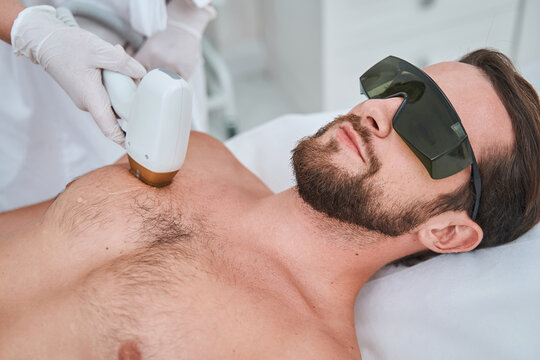Riyadh, a city known for its modern advancements, offers a sophisticated approach to aesthetic treatments, with laser hair removal in riyadh being a prime example. The science behind this increasingly popular procedure is both fascinating and highly effective, leveraging precise light energy to achieve long-term hair reduction. Understanding this science helps clients in Riyadh appreciate why multiple sessions are necessary, why technology matters, and what to expect from their treatment.

The Core Principle: Selective Photothermolysis
At its heart, laser hair removal operates on the principle of "selective photothermolysis." This term breaks down as follows:
- Photo-: Refers to light.
- Thermo-: Refers to heat.
- Lysis: Refers to destruction.
- Selective: Implies that the destruction is targeted and precise.
In practice, this means the laser emits a highly concentrated beam of light at a specific wavelength. This light is selectively absorbed by a "chromophore" – a substance that absorbs light of a particular color. In laser hair removal, the primary chromophore is melanin, the pigment found in hair.
When the melanin in the hair follicle absorbs the laser's light energy, it rapidly converts it into heat. This intense heat travels down the hair shaft to the hair bulb and matrix cells, which are responsible for hair growth. The heat effectively damages or destroys these critical structures, inhibiting or significantly delaying future hair growth from that follicle. Crucially, the laser is designed to deliver this energy in very short pulses, ensuring that the heat is confined to the hair follicle, minimizing thermal damage to the surrounding skin.
The Hair Growth Cycle: Why Multiple Sessions are Essential
One of the most critical scientific aspects influencing laser hair removal is the hair growth cycle. Hair follicles do not grow in unison; they cycle through three main phases independently:
- Anagen (Growth Phase): This is the active growing stage where the hair bulb is attached to the blood supply, actively producing hair. The hair shaft is rich in melanin during this phase, making it the ideal target for laser hair removal. The melanin content is highest, allowing for maximum absorption of the laser energy and efficient destruction of the follicle.
- Catagen (Transition Phase): A short transitional period where hair growth stops, and the follicle shrinks and detaches from its blood supply. Hair in this phase is not effectively targeted by the laser because it's no longer actively connected to the melanin-rich root.
- Telogen (Resting Phase): The dormant stage where the hair is no longer growing and eventually sheds. Hair in the telogen phase is completely ineffective for laser treatment as it is detached from the root and lacks the concentrated melanin target.
Because only hair in the anagen phase can be effectively treated, multiple laser hair removal sessions are absolutely necessary. Each session targets a different subset of hair follicles as they enter their active growth cycle. Clinics in Riyadh typically recommend a series of 6 to 8 sessions, spaced 4 to 6 weeks apart, to ensure all hair follicles are targeted at their most vulnerable stage, leading to significant and long-lasting hair reduction (typically 60-90%). Maintenance treatments may be needed annually or semi-annually to address any new, finer hair growth.
Advanced Technologies for Diverse Skin Tones in Riyadh
The effectiveness and safety of laser hair removal also depend heavily on matching the right laser wavelength to the client's skin tone (Fitzpatrick skin type) and hair color. Riyadh's leading clinics utilize advanced laser technologies to cater to this diversity:
- Alexandrite Laser (755 nm): This wavelength is highly absorbed by melanin, making it very effective for lighter skin tones (Fitzpatrick types I-III) and fine, dark hair. It's known for its speed in treating large areas.
- Diode Laser (800nm/810nm): Offers deeper penetration than Alexandrite, making it versatile for a wider range of skin tones (Fitzpatrick types I-IV) and effective for coarser, darker hair.
- Nd:YAG Laser (1064nm): With its longer wavelength, the Nd:YAG laser penetrates deepest and is less absorbed by epidermal melanin. This makes it the safest and most effective choice for darker skin tones (Fitzpatrick types IV-VI) and tanned skin, significantly reducing the risk of burns or hyperpigmentation.
- Integrated Cooling Systems: Modern lasers in Riyadh clinics incorporate sophisticated cooling technologies (like cryogen sprays, contact cooling, or air cooling) that chill the skin before, during, and after each pulse. This protects the epidermis from thermal damage and dramatically reduces discomfort, making the experience virtually painless for many.
- "In-Motion" Technology (SHR - Super Hair Removal): Used by systems like Alma Soprano ICE, this technique involves moving the laser handpiece continuously over the treatment area. It gradually heats the hair follicles to the effective temperature, minimizing pain while still effectively destroying the follicles.
By understanding the precise science behind laser hair removal – the selective targeting of melanin in the anagen phase, and the advanced technologies that enable this safely across all skin types – clients in Riyadh can approach their treatment with confidence, setting realistic expectations for achieving beautifully smooth, hair-free skin.




Comments